Submitted as a 2019 / 2020 Infrastructure Project
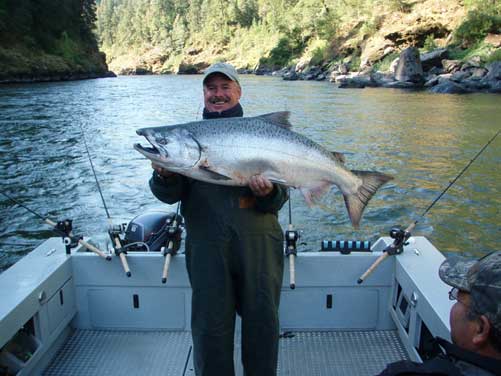
Rogue River Wild Spring Chinook have declined 60%
Hatchery Spring Chinook returns are down 63%
On the fact that any flood control plan detrimental to the fishery resource would be unacceptable, both locally and to the Federal and State fishery agencies.
From Final Environmental Impact Statement for Lost Creek Lake Project May 1972
Read the ODFW Letter of Support for the Rogue River Fisheries Project
EXECUTIVE SUMMARY – February 25, 2019
Restoration of Fisheries infrastructure project for 2019 / 2020 $78.1 million
The Rogue River Spring Chinook fishery was once a jewel of Spring time fisheries on the west coast, returning 34,000 top quality Spring Chinook Salmon. Only a very few rivers have a Spring Chinook run. The Rogue River Spring Chinook runs are extremely depressed. In 1977 Lost Creek Dam was completed 157 mile upriver from the ocean. There was 11 miles of Spring Chinook spawning habitat (33%) lost to Lost Creek Reservoir. US. Army Corps of Engineers was to mitigate for effects of Lost Creek Project by producing at Cole Rivers Hatchery 13,020 hatchery reared Spring Chinook Adults. They have failed to do so.
- Over the last 14 years the required return of 13,020 hatchery Spring Chinook now averages 4881 a 63% below required levels.
This results in an economic loss of $4,688,064.00 per year, $65.7 million over 14 years. - The Environmental Impact Statement of 1972 and the Authorizing Document for the Lost Creek Project was guided under a “Do No Harm to Fisheries” statement.
- In addition to the hatchery production failures the Wild/ Natural Producing Rogue Spring Chinook population has declined 60% to just an average of 9,663 over last 8 years.
- The average loss of 11,317 Wild NP Spring Chinook economic loss of $6.5 million annually.
- Combined economic loss over last 21 years = $366 million. “Do No Harm to Fisheries”
- The Rogue River Fisheries Restoration Plan is a comprehensive fisheries recovery plan that targets recovery of Spring Chinook and ESA Listed Coho Salmon for broad recovery.
- Secure tributary instream water flows and water quality issue’s needs.
- Recover spawning gravel needs and loss by supplementation and expand tributary spawning.
- Food – Address the Loss of Biodiversity in Rogue River Basin Aquatic Ecosystems.
- Modernize 47 year old Cole Rivers Hatchery to meet required mitigation.
Restitution of local economies for loss of fisheries opportunity $160 million
Rogue Basin Economies have long suffered with a nearly total closer on harvest of Spring Chinook Salmon, higher license fees. Fishermen traveled from all over the United States to participate in the once famous Rogue River Spring Chinook fishery. Spring Chinook were available from late March through July, this time frame was perfect for businesses coming out of a long winter and to kick off summer travel season. As an outdoor recreation there is simply nothing comparable on the west coast to replace this great once fishery. After over two decades of economic harm from a federal project that promised “No Harm to Fisheries” it is time for all to put effort and resources forward to restore and attempt to make whole the famous Rogue River fisheries and related economy.
Rogue River Fisheries Recovery Concept $78.1 Million
This document is meant for consideration for 2019/20 National Infrastructure Project
Background:
The Rogue Basin Flood Control Project was started in 1935 paused during the war years and then heated up in 1956 just after the destructive Flood of 1955. The authorization for the Rogue Basin Project came in the Rivers and Harbors Act of October 23rd, 1962, two years prior to the devastating Christmas Day Flood of 1964.
The Final (EIS) Environmental Impact Statement for Lost Creek Dam was published in May of 1972, which gave direction of how the Lost Creek Project was to be operated and impacts mitigated for.
“Do No Harm statement” This statement below came from a public meeting in 1956 and followed all authorization documentation forward.
“On the fact that any flood control plan detrimental to the fishery resource would be unacceptable, both locally and to the Federal and State fishery agencies”.
Cole Rivers Hatchery was ordered to be built and in operation before Lost Creek Dam could be built. Hatchery construction was completed in 1973 and the dam construction was begun and completed in 1977. The primary purpose of Cole Rivers Hatchery was to mitigate for Spring Chinook spawning and rearing habitat lost. The Environmental Impact statement stated Cole Rivers Hatchery was to produce 13,020 returning Adult Spring Chinook at the hatchery to meet the projects authorization requirements.
Over the last 14 years Hatchery Spring Chinook shortfalls average 63% and Wild or Natural Spawning runs of Spring Chinook are now 60% below expected pre-dam levels. Wild / Natural Producing Spring Chinook populations are shattered by predictable but unaddressed habitat issues relating to Lost Creek Project. Wild Spring Chinook harvest has virtually been closed down with a huge economic impacts for over a decade. Failures in sustaining the valuable once famous Rogue River Spring Chinook fishery violate the intent of the Lost Creek Project authorization. This decline has resulted in higher sport license fees and severely restricted sport harvest regulations and declining participation that have impacted the Rogue Basin in economic losses of estimated $366 million dollars in last 21 years.
At this time a long overdue funded Spring Chinook Salmon and ESA listed Coho Salmon restoration and restitution plan is long overdue. Cole Rivers Hatchery is 47 years old and systems are failing. Over the last few years millions of juvenile Spring Chinook have perished due to hatchery failures and those released to migrate to the ocean are of poor health in many cases.
Loss of habitat below the Dam is unaddressed leading to a collapse of Wild/Natural Production that hits the early run component of the Spring Chinook run especially hard. Only 40% of pre-dam Wild/NP Spring Chinook return annually when adjusted for lost habitat above the dam. It is our joint responsibility to recover this once famous fishery and uphold the authorization requirements of the Lost Creek Project.
Restoration:
Restoration of Rogue River Spring Chinook and other effected species habitat is of concern like ESA Threatened Coho Salmon and Steelhead. Habitat is needed to restore diversity and insure current and future generations will have historically viable fisheries now and in the future.
Critical Requirements of a Rogue River Spring Chinook / Coho Recovery effort:
- All Spring Chinook spawn in the 25 mile stretch of the river between Medford and Lost Creek Reservoir in the Upper Rogue River. ESA Listed Coho Salmon and steelhead trout spawn in mainstem and tributary streams as well.
- The spawning habitat in the mainstem has been deteriorated. Winter time water temperatures are up to 3 degrees warmer than pre-dam releases which result in incubating eggs hatching too early and fry not surviving the harsh late winter and very early spring river environment. This early hatching is lethal to many of the mainstem Rogue River Wild/Natural producing Spring Chinook salmon hatchlings.
- The loss of spawning gravel migration from above the dam has depleted the available spawning areas for surviving Wild/Natural producing Spring Chinook salmon throughout the Upper Rogue River. (USACE promised Rogue Basin residents during project planning that gravel recruitment would not be an issue, it is an issue and a big one, USACE miss-lead the Rogue Basin residents).
- Expansion of tributary spawning accessibility to Wild/NP Spring Chinook, Steelhead and ESA Threatened Coho Salmon is critically important. Tributary water withdrawals are of prime concern.
- Predator impacts on out migrating juvenile Spring Chinook, ESA Threatened Coho and Steelhead has risen sharply since the Rogue Basin Project was built. Umpqua Pike Minnow and Cormorants are now well established within the basin. The Umpqua Pike Minnow is a non-native species that entered the river in about 1979, 2 years after dam completion that altered water flows and temperatures to allow colonization of the Rogue River by Umpqua Pike Minnow to take place.
- Cole River hatchery is failing after 47 years. Modernization updates need to be made to a once state of the art fish hatchery. Mitigation goals promised by the USACE are not being met.
- The Rogue River needs an infusion of the types of food young juvenile salmon and steelhead can grow strong and healthy on. Terrestrial insects need to be planted in Upper Rogue river and tributaries for heathy growth and juvenile migration; depressed resident trout populations will also benefit. “During their fresh water residence, fry feed chiefly on terrestrial insects. Fry may form into schools during their freshwater residence”. https://www.fws.gov/refuge/Togiak/wildlife_and_habitat/fish/salmon_lifecycle.html
Critical Steps in Recovery of Upper Rogue Spawning Habitat
- Secure instream water flows to allow spawners to access the few Upper Rogue Tributaries unimpeded. With expanded or reclaimed spawning habitat in tributaries the issue of lethal water temperatures during egg incubation is mitigated, this is likely the only way to address survival of early run Spring Chinook.
- Big Butte Creek – Located 1 mile downstream from William Jess Dam/Lost Creek Reservoir.
Wild/NP Spring Chinook love Big Butte Creek with nearly 10%, about 900 Wild/NP Spring Chinook spawn in Big Butte Creeks accessible lower 1 mile. The stream is water flow challenged during spawning migration with blockages; seek additional flows and secure improved passage at natural blockages. About 2/3 of the historical water flow is currently diverted. Extensive spawning and rearing habitat available, over 25 miles. - Elk Creek – located about 3 miles below William Jess Dam/Lost Creek Reservoir. Water flow challenged, seek additional flows and accessible spawning habitat. About 4 miles of habitat available in lower Elk Creek with additional water flow required. Used by ESA Listed Coho Salmon.
- Little Butte Creek – located about 20 miles below William Jess Dam/Lost Creek Reservoir. There is extensive water diversion for flood irrigation within Little Butte watershed. 20 miles of spawning habitat accessible with increased water flows. Little Butte Creek violates states water quality standards. Little Butte Creek is now used by 22% of Rogue River ESA Listed Coho Salmon.
- Bear Creek – Located near Medford about 23 miles downstream from William Jess Dam/Lost Creek Reservoir. There is extensive water diversion for irrigation. 20 miles of improved spawning habitat with increased water flows. Used by ESA Listed Coho Salmon.
- Big Butte Creek – Located 1 mile downstream from William Jess Dam/Lost Creek Reservoir.
- The loss of spawning gravel migration from above the dam has been depleted by 42 years of blockage. The available spawning areas for surviving Wild/Natural producing Spring Chinook are diminished and over used throughout the Upper Rogue River. Tributary spawning will help address this overuse and diversity by expanding habitat outside of the mainstem. Spawning gravel augmentation in mainstem and tributaries is needed. Request that the USACE design Upper Rogue River mainstem and tributary gravel augmentation, fish passage and gradient reduction where needed.
- Cole Rivers Hatchery – Located about 25 miles upstream of Medford at the total habitat blockage of William Jess Dam/Lost Creek Reservoir.
“Cole Rivers produces fish to meet the mitigation obligation for William Jess Dam (Lost Creek Dam). The primary purpose of the hatchery is production of Spring Chinook salmon. William Jess Dam/Lost Creek Reservoir stopped production of about 1/3 of the spawning population of Rogue spring Chinook. The mitigation goal is 13,020 adult Spring Chinook at the hatchery. Cole Rivers hatchery also has mitigation goals for Coho Salmon, Summer Steelhead, Winter Steelhead, and Rainbow Trout”.
The aging Cole Rivers hatchery is not dependable in its ability to produce required mitigation needs to meet Dam Authorization and the Environmental Impact Statement for the project. Undependable water filtration and corroding pipes impair production of over 2 million salmon and steelhead juveniles, leading to deficient quality and poor hatchery returns and unmet required returns. In 2016 returns of Spring Chinook were just 0.15%; over the last 14 year average the hatchery has a Hatchery Spring Chinook adult return rate of just 0.38%. Other hatcheries in the State are seeing 1.58% Chinook returns. To reach mitigation requirements Cole Rivers must reach 0.77% return rate which it has been unable to do anytime in the last 14 years. These poor returns come at great economic cost to the Rogue Basin economies. Estimated losses of near $4.7 million dollars annually just in Cole Rivers Hatchery Spring Chinook shortfalls. Only 4881 Hatchery Spring Chinook have returned annually over the last 14 years on average, required goal is 13,020 a shortfall of 8,139 Hatchery Spring Chinook adults. - Loss of Biodiversity in Aquatic Ecosystems
The Rogue River needs an infusion of the types of food young juvenile salmon, steelhead and trout can grow strong and healthy on. Terrestrial insects need to be planted in Upper Rogue River and tributaries for heathy growth and rearing of juveniles. Some recent studies around the world are showing huge insect loses of up to 85% and many important terrestrial insects found in rivers a stream have declining populations especially below dams.
Terrestrial insect life cycle – water born insects that supply the food chain of the Rogue River; the larvae emerge from the water turn into adult insects (caddis, stoneflies, mayflies, midges and more) they then migrate upstream to lay their eggs and the cycle begins again. On the Upper Rogue these insects run into a 325 ft. tall dam blocking migration those few that the make it over the dam are met with a 10 mile long lake and nowhere to productively lay their eggs so the cycle and the food source can prosper. Prior to the William Jess Dam and Lost Creek Reservoir the terrestrial insect population of the Upper Rogue was healthy, but as the years have passed fewer and fewer insects hatch and fish populations naturally decline perpetuated by Loss of Biodiversity in the Aquatic Ecosystems of the Rogue River.
A Four Step Recovery Plan for Rogue River Spring Chinook / Coho
Water Quality – Spawning Habitat – Hatchery Supplementation – Food
Secure tributary instream water flows and water quality needs.
Recover spawning gravel needs and losses by supplementation and expand tributary spawning.
Food – Address the Loss of Biodiversity in Rogue River Basin Aquatic Ecosystems.
Restore the aging Cole Rivers Hatchery correcting shortfalls in required production.
Restoration of primary tributaries on the Upper Rogue River.
Big Butte Creek – 1 mile below William Jess Dam and Lost Creek Reservoir (about River mile 152).
Goal: Expand early run Spring Chinook spawning in Big Butte Creek to what must have been historical. 3000 spawning Spring Chinook. Currently about 900 Spring Chinook spawn within Big Butte Creek.
There are two primary water diverters City of Medford (25 cfs to 50 cfs) from Big Butte Springs and Eagle Point Irrigation District at 100 cfs at about 11 miles up Big Butte Creek.
To improve early Spring Chinook spawning in Big Butte Creek this will entail water flow and habitat improvements. Big Butte Creek spawning gravel is poor and water flow challenged because its flows are heavily diverted. Big Butte Creek is loved by Spring Chinook as nearly 10% of Spring Chinook (about 900) spawn in just 1 mile of Big Butte Creek. Big Butte Creek is a major Upper Rogue River tributary that joins the mainstem Rogue River approximately 1 mile below the total blockage of Lost Creek Reservoir. In places the gradient is steep. Gravel migration studies have been done by ODFW with surprisingly good results. Big Butte Creek has > 25 miles of potential spawning habitat. There are currently stream flows of about 70 cfs during peak spawning time of Sept. thru early October with likely 150 CFS to 200 CFS being diverted. With a unimpeded stream flow of over 250 cfs it is hard to believe Spring Chinook did not access and use all of Big Butte Creek for spawning historically.
Estimated Costs for Big Butte Creek: $9.7 million, items below to be included but not limited to:
- Acquire permeant instream water rights all or part of the year.
- Fish passage / Barrier removal
- Address gradient reduction and spawning gravel supplementation.
- Improve Biodiversity in Butte Creek Aquatic Ecosystems (food) / riparian vegetation
- USACE engineering of gradient reduction and fish passage and barrier issues requested.
- USACE review additional water storage options (Willow Lake) request.
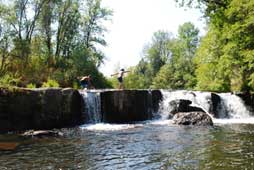
Cost total Big Butte Creek Project $9.7 million dollars.
- ESTIMATED INCREASE
- Spring Chinook 1,800
- ESA Threatened Coho Salmon 350
- Winter / Summer Steelhead 600
- Total annual estimated increase 2,750
(image: Lower Big Butte Creek Crowfoot Falls Fish Passage Barrier)
Elk Creek – Located about 5 miles below William Jess Dam and Lost Creek Reservoir (about River mile 148).
Goal: Expand early run Spring Chinook spawning in Elk Creek to 500 spawning Spring Chinook, currently only a few Spring Chinook spawn within Elk Creek.
With the addition of water flows to Elk Creek this tributary could produce 500 or more spawning Spring Chinook and aid ESA Threatened Coho Salmon. Request a feasibility study from the USACE for a gravity or pump driven pipe line over the hill from Lost Creek Lake (a short distance) to be used during spawning migration and to add gradient improvements for spawning gravel additions in the lower 4 to 5 miles of Elk Creek.
Little Butte Creek project outlined costs for Elk Creek: $5.3 million items below to be included but not limited to:
- Water pipeline for Lost Creek Lake for 25 CFS during spawning migration.
- Gradient needs and spawning gravel supplementation.
- Biodiversity in Butte Creek Aquatic Ecosystems (food) / riparian vegetation
- USACE engineering of Pipeline and spawning gravel placement and gradient needs requested
- Request pumping costs from USACE – William Jess Dam power generation.
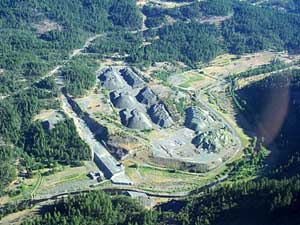
Cost total Elk Creek Project $5.35 million dollars
- ESTIMATED INCREASE
- Spring Chinook 500
- ESA Threatened Coho Salmon 350
- Winter / Summer Steelhead 500
- Total annual estimated increase 1,350
(image: Abandoned Elk Creek Dam 3 mile upstream on Elk Creek)
A October 1998 Study Effects of Lost Creek Dam on Migratory Salmonids in Elk Creek / Annual Progress Report showed Elk Creek was used by 21.5% of ESA Threatened Wild Adult Coho Salmon spawning above the old Gold Ray Dam counting station below Central Point, Or.
4.4% Adult Wild Steelhead spawned in Elk Creek in the same study. The study goes on to say; “the Elk Creek Basin appears to have the capability of producing a large portion of wild migratory salmonids produced in the upper portion of the Rogue River Basin.
Little Big Butte Creek – Located 24 miles downstream from William Jess Dam and Lost Creek Reservoir (about River mile 129). Little Butte Creek near Eagle Point is a 17-mile-long tributary of the Rogue River.
Little Butte Creek basin is recognized as the best option for fisheries enhancement within the Upper Rogue River. Many species use this stream for spawning. 22% of Rogue River ESA Listed Coho Salmon spawn in Little Butte Creek. Portions of Little Butte run dry in summer months and Lower Little Butte Creek is very water quality challenged; big habitat and juvenile survival gains can be made in Little Butte Creek basin.
Little Butte Creek is water flow challenged because its flows are heavily diverted. Estimated Costs for Big Butte Creek fisheries restoration: $19.35 million, ESA Listed Coho and Steelhead would benefit greatly also. Items below to be included but not limited to:
- Acquire permeant instream water rights all or part of the year.
- Fund help for water diverters to defray switch to pipe irrigation from flood irrigation.
- Fish passage and screening
- Gradient issues and spawning gravel supplementation.
- Biodiversity in Little Butte Creek Aquatic Ecosystems (food) / riparian vegetation
- Address Water Quality issues.
USACE review and recommend additional water storage options, request.
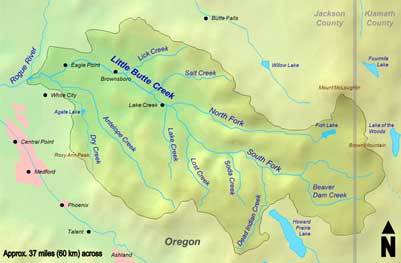
Little Butte Creek Project cost total $19.35 million dollars
- ESTIMATED INCREASE
- Spring Chinook 1,500
- ESA Threatened Coho Salmon 1,000
- Winter / Summer Steelhead 600
- Fall Chinook 1,000
- Total annual estimated increase 3,600
Bear Creek: Bear Creek flows from Ashland to north of Central Point and is a 29 mile long tributary of the Rogue River at about river mile 123. Bear Creek is water flow challenged because its flows are heavily diverted.
Bear Creek empties into the Rogue River west of Central Point Oregon. The 362-square-mile Bear Creek watershed includes approximately 290 miles of streams. Another 250 miles of irrigation canals transport water to farms across the watershed. Land use in the watershed is approximately 18 percent urban, 35 percent agriculture and 46 percent forest.
Estimated Costs for Bear Creek fisheries restoration: $20.6 million, ESA Listed Coho and Steelhead would benefit greatly. Items below to be included but not limited to:
- Acquire permanent instream water rights all or part of the year.
- Fund help for water diverters to defray switch to pipe irrigation from flood irrigation.
- Address fish passage and screening issues.
- Gradient issues and spawning gravel supplementation.
- Biodiversity in Bear Creek Aquatic Ecosystems (food) / riparian vegetation
- Water Quality issues addressed
USACE review additional water storage options, request.
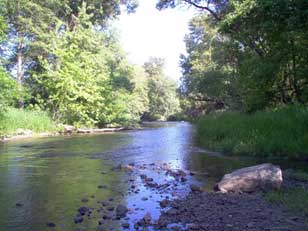
Bear Creek Project cost total $20.6 million dollars
- ESTIMATED INCREASE
- ESA Threatened Coho Salmon 1,000
- Winter / Summer Steelhead 800
- Fall Chinook 500
- Total annual estimated increase 2,300
Mainstem Upper Rogue Habitat Restoration – $16 million
“The salmon fishery of the Rogue River is especially important to the sport and commercial programs of Oregon. It is also significant on a national basis”. From the Environmental Impact Statement for the Lost Creek Lake Project 1972 page 2-7.
The Upper Rogue River has been changed by the 42 year old William Jess Dam and Lost Creek Reservoir in almost every way possible, water flows, available spawning habitat and Biodiversity in Aquatic Ecosystems (food) / riparian vegetation. The Upper Rogue mainstem has received little attention in fish restoration since the Dam was completed in 1977; it is past time to address fisheries restoration on the Upper Rogue River mainstem were Wild/NP Spring Chinook are depleted by 60%.
The mainstem Upper Rogue has magnificent water flows year around thanks to the William Jess Dam and Lost Creek Reservoir. The Upper Rogue faces a shortage of gravels needed for spawning, after 42 years of blocked gravel migration, spawning gravels are much depleted throughout the 25 mile area of the Upper Rogue River.
The Rogue River needs an infusion of the types of food young juvenile salmon and steelhead can grow strong and healthy on. Terrestrial insects need to be planted in Upper Rogue river and tributaries for heathy growth and juvenile migration; depressed resident trout populations will also benefit. “During their fresh water residence, fry feed chiefly on terrestrial insects. Fry may form into schools during their freshwater residence”.
Mainstem wintertime water temperatures are lethal to a great many of Wild/NP Spring Chinook fry as they hatch too early into a wintertime environment of little available food. We need to research and Introduce food sources to sustain early hatching Spring Chinook fry to prevent starvation.
Estimated Costs for mainstem fisheries restoration: $16 million dollars, ESA Listed Coho and Winter/Summer Steelhead would benefit greatly also. Items below to be included but not limited to:
- Spawning gravel supplementation.
- Biodiversity in Aquatic Ecosystems (food) / riparian vegetation
- Create Off Channel Rearing Habitat
- Request USACE spawning gravel placement and off channel spawning develop 20 year mainstem spawning and rearing plan.
With the addition of spawning gravels for expanded spawning and greater food sources for healthier juveniles there would be expected increases to Wild/NP salmon and steelhead in the mainstem:
(total annual increase 6,700)
| Wild/NP Spring Chinook Salmon – 2,500 | Wild/NP Winter/Summer Steelhead – 2,500 |
| Wild/NP ESA Listed Coho Salmon – 200 | Wild/NP Fall Chinook – 1,500 |
Evans Creek – Located 35 miles downstream from William Jess Dam and Lost Creek Reservoir (about River mile 108) a 35-mile-long tributary of the Rogue River. Two abandoned dams on Evans Creek were demolished in 2015. Wimer and Fielder dams were formerly listed among the 10 worst dams in the state for migratory fish passage. Today there are still several small abandon dams on Evans Creek in need of removal.
- Acquire permeant instream water rights all or part of the year.
- Fund help for water diverters to defray switch to pipe irrigation from flood irrigation.
- Fish passage and screening.
- Biodiversity in Bear Creek Aquatic Ecosystems (food) / riparian vegetation.
- Address Water Quality issues.
Evans Creek project outlined cost total $7.1 million dollars.
- ESA Threatened Coho salmon 500
- Winter / Summer Steelhead 600
- Fall Chinook 750
- Total annual estimated increase 1,850
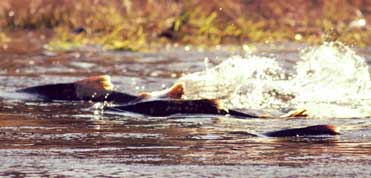
Fish and habitat funds within the Rogue River Fisheries Recovery Plan should have the ability to be moved to other in Rogue River basin anadromous fisheries needs.
Estimate Upper Rogue tributary salmon and steelhead increases of 19,050 and all would be Wil / NP stocks.
| Wild/NP Spring Chinook Salmon – 6,300 | Wild/NP Winter/Summer Steelhead – 5,600 |
| Wild/NP ESA Listed Coho Salmon – 3,400 | Wild/NP Fall Chinook – 3,750 |
Rogue River Fisheries Restoration Portion Costs $78.1 million
| Big Butte Creek $ 9.7 million | Bear Creek $20.6 million |
| Elk Creek $ 5.35 million | Evans Creek $ 7.1 million |
| Little Butte Creek $19.35 million | Upper Rogue River Maintem $16.0 million |
Other Basin Fish related Infrastructure
Call for US. Army Corps of Engineers to modernize Cole Rivers Hatchery to meet or exceed required hatchery mitigation production requirements.
Cole River Hatchery is 46 years old it is time for modernization.
“Background: Cole Rivers Fish Hatchery was built by the Corps of Engineers to replace the fish and fishery that were lost due to dam construction and operation. The primary purpose of Cole Rivers Hatchery is to produce Spring Chinook Salmon for mitigation for lost spawning habitat inundated by William Jess Dam which was completed in 1977, blocking 10 miles of the mainstem and portions of both the Middle Fork and South Fork of the Rogue River”.
“Cole Rivers produces fish to meet the mitigation obligation for William Jess Dam (Lost Creek Dam). The primary purpose of the hatchery is production of Spring Chinook salmon”.
The Final Environmental Impact Statement May 8, 1972 for Lost Creek Dam (now William Jess Dam) clearly states Spring Chinook return above Lost Creek Dam required being 13,020 adults at the hatchery for authorization of the Lost Creek Dam Project.
This table shows the failure of the USACE to fulfill required hatchery supplementation over 38 years.
| 10 YEAR AVERAGE | RETURNING HATCHERY ADULTS | PERCENTAGE OF 13,020 REQUIRED RETURN | SMOLT RELEASE RETURN PERCENTAGE |
| 1981-1990 | 19,643 | 151% 2.6% Return | 2.6% |
| 1991-2000 | 24,518 | 189% 1.9% Return | 1.9% |
| 2001-2010 | 7,898 | -40% .54% Return | 0.54% |
| 2011-2018 | 5,172 | -62% .38% Return | 0.38% |
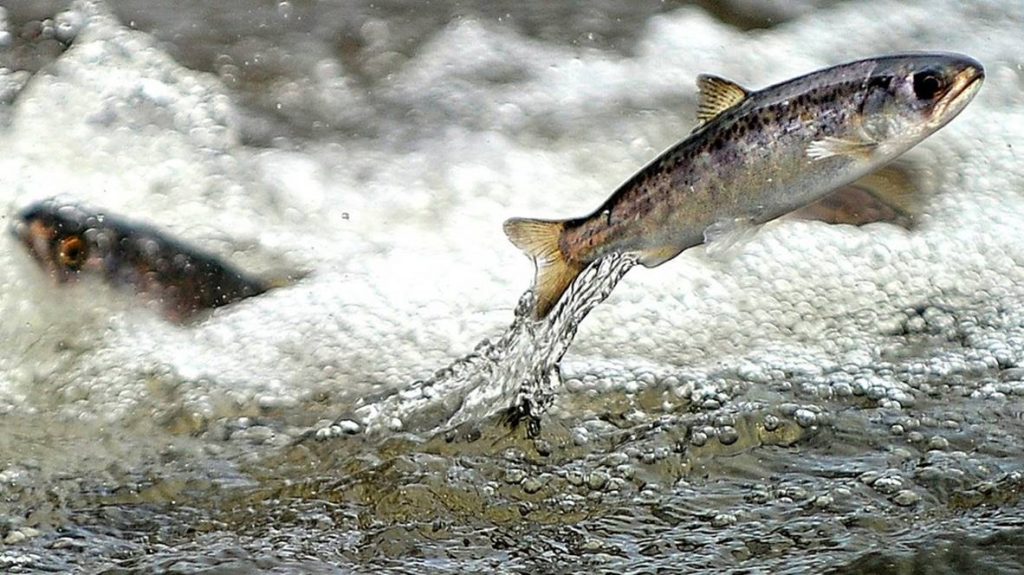
Rogue River Spring Chinook Smolt ready to migrate150 miles to the ocean. Cole Rivers Hatchery to produce 1.73 million healthy Spring Chinook Smolt to bring back 13,020 adults to the hatchery only an average of 4881 have returned over the last 14 years.
ODFW used to release some of its Rogue hatchery spring chinook smolts in March, but that program was discontinued in 1983 amid concerns over negative impacts to wild spring chinook fry hatching in the upper Rogue, VanDyke says.
Restitution For Economic Damaged Spring Chinook – $140 million
Concerning Wild or Naturally Producing Spring Chinook
Naturally Producing (NP) Spring Chinook annual returns have plummeted 60% from pre-dam numbers. The dam was completed in 1977 with primary purposes of Flood Control and Fisheries.
Final Environmental Impact Statement (page 3-10) – “any flood control plan detrimental to the fishery resource would be unacceptable”,
We now are at a 60% below Wild/NP Spring Chinook pre-dam levels.
We now are at a 63% below required hatchery produced Spring Chinook project requirements.
The Final Environmental Impact Statement May 8, 1972 for Lost Creek Dam (now William Jess Dam) clearly states Spring Chinook hatchery returns required to be 13,020 adults at the hatchery for authorization of the Lost Creek Dam Project.
| YEARS | WILD/NP AVG. | AVERAGE RUN SIZE | HATCHERY COMPONENT AVG. | DEFICIT RELATED TO DAM COMBINED WILD + HATCHERY | ANNUAL AVERAGE ECONOMIC LOSS |
| 1978-1987 | 40,631 | +6,631 avg. | |||
| 1988-1997 | 31,240 | -2,760 avg. | |||
| 1998-2007 | 7,596 | 19,834 | 12,238 avg. | -14,166 avg. | $ 8,159,616 |
| 2008-2017 | 9,663 | 16,382 | 4,940 avg. | -17,618 avg. | $10,147,968 |
| 21 yr. Economic Loss Total | $386,151,680 |
The combined Spring Chinook (hatchery and Wild/NP) shortfall over 21 years shows a $366 million dollar loss the Rogue Basin economies.
Requested Economic Restitution per affected County totaling $160 million is Less than ½ the Economic Impacts suffered over 21 yrs.
| Curry County | $60 million | Small Business restitution of $20 million |
| Jackson County | $60 million | Small Business restitution of $20 million |
| Josephine County | $20 million | River Guides can apply in area they operated |
- Curry and Jackson County Small Business restitution of $20 million limited to $100,000 per business for first disbursement ($100,000.00 x 100 = $10 million). After first distribution, readdress dispersals if there is money left over from $20 million small business portion.
- Priority to Fishing Guides and small local Tackle Sales (most directly affected).
- Setup of individual county review teams to approve application to avoid graft.
Curry Sports Fishermen Association: Mark Lottis President Authorization Given
Curry County Commissioner Chair: Christopher Paasch
Curry County Commissioner Vice Chair: Court Boice
Curry County Commissioner: Sue Gold
Rogue River Fisheries Consultant: Steve Beyerlin
Oregon Department of Fish and Wildlife: Dan Van Dyke Support letter in accompanying document.
CONTACT INFORMATION FOR THIS PROJECT
Chris Paasch, Curry County Commissioner | (541) 247-3213 office / (541) 373-7202 cell
Steve Beyerlin | (541) 247-4138, steve@fishoregon.com | 94575 Chandler Rd., Gold Beach Oregon 97444
Dan Van Dyke – District Biologist, ODFW District Office / Central Point Oregon | (541) 826-8774